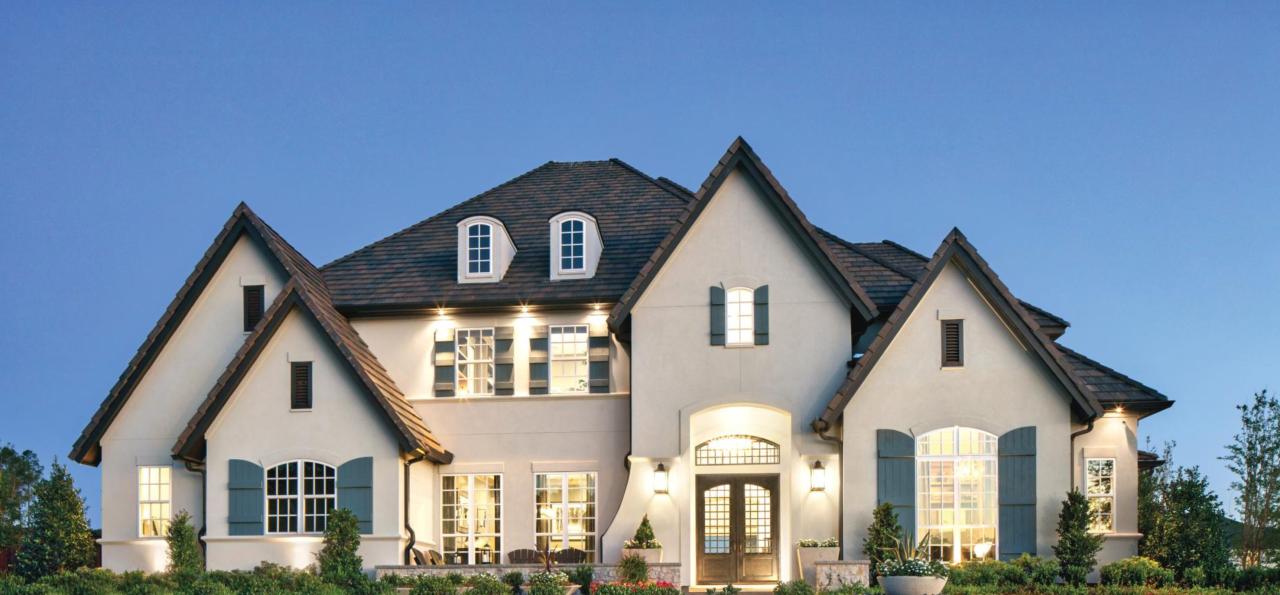The Allure of Luxury Property

The appeal of luxury homes transcends mere shelter; it embodies a lifestyle, a statement of success, and a tangible store of wealth. Several intrinsic factors contribute to their enduring value and investment potential.
A. Scarcity and Uniqueness
- Limited Supply: True luxury properties are inherently scarce. This scarcity stems from prime locations, unique architectural designs, bespoke finishes, and expansive land parcels that are simply not replicable at scale. Unlike mass-produced housing, each luxury home often possesses individual characteristics that set it apart.
- Irreplaceable Locations: Many luxury residences are situated in highly coveted areas – beachfronts, penthouses with panoramic city views, sprawling estates bordering protected lands, or historic districts. These locations are finite, and their desirability only grows with time, safeguarding the property’s value against market fluctuations.
- Custom Craftsmanship and Quality: Luxury homes are built to exacting standards, often featuring custom craftsmanship, high-end materials, state-of-the-art technology, and meticulous attention to detail. This superior quality ensures longevity, reduces the need for frequent major renovations, and maintains a high resale value.
B. Value Appreciation and Resilience
- Stable Capital Growth: Historically, luxury real estate has shown remarkable stability and consistent appreciation, even during broader economic downturns. While the general market might experience volatility, the top tier often acts as a safe haven for wealth, attracting high-net-worth individuals who are less affected by economic shifts.
- Inflation Hedge: Like other real assets, luxury property serves as an effective hedge against inflation. As the cost of living rises, the value of tangible assets, particularly those with inherent scarcity, tends to increase, protecting purchasing power.
- Global Demand: The market for luxury homes is global. High-net-worth individuals from around the world seek these properties for primary residences, vacation homes, or as part of their international investment portfolios. This diverse buyer pool adds a layer of demand stability, as economic downturns in one region may be offset by growth in another.
C. Tangible Asset and Lifestyle Benefits
- Prestige and Status: Owning a luxury home often comes with a significant degree of prestige and social status. It reflects success and provides access to exclusive communities and networks, which can be an intangible, yet valuable, aspect for many buyers.
- Personal Enjoyment and Utility: Unlike abstract financial instruments, luxury real estate offers immediate personal enjoyment and utility. Owners can reside in, entertain guests, or simply appreciate their investment in a tangible way. This dual benefit of investment and personal use enhances its appeal.
- Privacy and Security: Many luxury properties offer enhanced levels of privacy, security, and exclusivity, which are highly valued by their clientele. Gated communities, expansive lots, and sophisticated security systems are common features, contributing to peace of mind.
Key Drivers of Luxury Market Performance
While the inherent qualities of luxury homes contribute to their investment appeal, external factors play a crucial role in their market performance.
A. Economic Health and Wealth Creation
- Stock Market Performance: Strong performance in global stock markets often correlates with increased wealth among high-net-worth individuals, leading to greater liquidity and a higher propensity to invest in luxury real estate. As investment portfolios grow, so does the capacity to acquire high-value assets.
- Global GDP Growth: Robust economic growth worldwide creates new wealth and expands the pool of potential luxury property buyers. Emerging economies, in particular, can be significant sources of demand as their wealthy classes seek international investment opportunities.
- Interest Rates (Indirect Impact): While high-net-worth buyers are less reliant on mortgages, very low interest rates can still make financing more attractive even for substantial purchases, or free up capital for other investments that indirectly benefit the luxury market. Conversely, rising rates might slow down the broader market, but the luxury segment often shows greater resilience.
B. Geopolitical Stability and Safe Havens
- Capital Flight: In times of geopolitical uncertainty or economic instability in certain regions, wealthy individuals often seek “safe haven” assets in politically stable countries with strong legal frameworks. Luxury real estate in cities like London, New York, Singapore, or Geneva frequently benefits from such capital migration.
- Attractive Investment Climate: Countries with transparent property laws, low corruption, and favorable tax regimes tend to attract international luxury real estate investors. The ease of doing business and the protection of property rights are critical considerations.
C. Demographic Shifts and Lifestyle Trends
- Aging Population with Accumulated Wealth: A significant portion of wealth is held by older generations who may seek to downsize from large family homes to high-end, maintenance-free city apartments, or conversely, acquire sprawling retirement estates. This demographic continues to drive demand in certain luxury segments.
- Rise of Tech Wealth: The rapid growth of the technology sector has created a new generation of affluent individuals who are keen to invest in luxury properties, often prioritizing smart home technology, modern design, and proximity to innovation hubs.
- Desire for Wellness and Sustainability: There’s a growing trend among luxury buyers to seek properties that incorporate wellness features (e.g., home gyms, spas, meditation rooms) and sustainable building practices. Eco-friendly materials, energy efficiency, and biophilic design are becoming increasingly important selling points.
Navigating the Luxury Real Estate Market

Investing in luxury homes requires a nuanced understanding of market dynamics, specialized expertise, and a strategic approach.
A. Identifying Opportunity
- Micro-Market Analysis: The luxury market is highly localized. A “boom” in one upscale neighborhood may not translate to another. Thorough research into specific micro-markets, understanding local demand drivers, inventory levels, and recent sales comparables, is crucial.
- Off-Market Deals: A significant portion of luxury transactions occur off-market to maintain privacy. Building relationships with specialized luxury real estate agents and networks is vital to access these exclusive opportunities.
- Emerging Luxury Hubs: While established luxury markets remain strong, keep an eye on emerging cities or regions that are experiencing significant wealth creation and infrastructure development. These areas might offer higher growth potential.
- Specialized Property Types: Consider investing in specialized luxury properties like historic estates, vineyards, private islands, or high-end equestrian facilities, which cater to niche demands and can offer unique value propositions.
B. Due Diligence and Valuation
- Professional Appraisal: Engage independent appraisers with specific experience in luxury valuations. Their expertise is crucial in assessing the unique features, finishes, and market positioning that contribute to the property’s premium price.
- Structural and Environmental Assessments: Beyond standard home inspections, luxury properties may require more detailed structural engineering reports, environmental impact assessments (especially for large land parcels), and evaluations of complex systems (e.g., smart home automation, advanced HVAC).
- Legal and Title Review: Ensure meticulous review of all legal documents, including title deeds, easements, zoning regulations, and any potential liens or encumbrances, to safeguard your investment. For international transactions, understanding local property laws is paramount.
- Future Development and Infrastructure Plans: Investigate any planned developments in the vicinity that could impact the property’s value, either positively (e.g., new amenities, transportation links) or negatively (e.g., high-density construction, undesirable commercial projects).
C. Financing Luxury Acquisitions
- Private Banking and Wealth Management: High-net-worth individuals often access financing through private banking divisions that offer tailored lending solutions, often with more flexible terms and competitive rates than conventional banks.
- Non-Recourse Loans: For significant investments, some lenders may offer non-recourse loans, where the collateral is solely the property itself, protecting other assets in the event of default.
- Cash Purchases: A substantial portion of luxury transactions are conducted entirely in cash, reflecting the liquidity of high-net-worth buyers and streamlining the purchase process.
D. Exit Strategies and Returns
- Long-Term Hold: Luxury real estate is generally a long-term investment. While short-term gains are possible, the most significant appreciation is often realized over a longer holding period, allowing market cycles to play out and value to accrue.
- Rental Income: For non-primary residences, luxury properties can generate substantial rental income, particularly for short-term luxury rentals (e.g., vacation rentals, corporate housing) or long-term high-end leases, providing cash flow in addition to capital appreciation.
- Value-Add Opportunities: Consider opportunities to enhance the property’s value through strategic renovations, additions, or improvements to amenities. This can significantly boost resale value, but requires careful planning and execution.
- Strategic Market Timing: While long-term hold is generally advisable, understanding market cycles and recognizing peak demand periods in your specific micro-market can help optimize your exit strategy and maximize returns upon sale.
Challenges and Risks in Luxury Investment
Despite its allure, investing in luxury real estate is not without its challenges and risks.
A. High Entry Barrier
- Significant Capital Outlay: The most obvious challenge is the substantial capital required to acquire luxury properties. This inherently limits the pool of potential investors.
- Illiquidity: Compared to stocks or bonds, real estate, especially luxury real estate, is less liquid. Selling a high-value property can take time, particularly in a slower market, and involves significant transaction costs.
B. Market Specific Risks
- Oversupply in Specific Segments: While scarcity is a hallmark, specific luxury segments (e.g., new luxury condo towers in certain urban centers) can face temporary oversupply, leading to price stagnation or even declines.
- Economic Downturns (Limited Impact): While more resilient, severe economic downturns can still impact the luxury market, leading to longer selling times and, in rare cases, price adjustments, even if less severe than the broader market.
- Changes in Wealth Distribution: Shifting global wealth patterns or new taxation policies on high-net-worth individuals could impact demand for luxury properties in specific jurisdictions.
C. Property-Specific Risks
- High Maintenance Costs: Luxury homes often come with significant maintenance costs due to their size, complex systems, and high-end finishes. Gardens, pools, advanced security systems, and bespoke amenities all require substantial upkeep.
- Obsolescence: While quality endures, design trends and technology evolve. A luxury home built with cutting-edge features a decade ago might appear dated today, potentially impacting its resale value unless continually updated.
- Property Taxes and Insurance: High-value properties incur substantial property taxes and often require specialized, expensive insurance policies due to their value and unique features. These ongoing costs must be factored into the investment analysis.
Conclusion
Luxury homes represent a compelling and strategic investment opportunity, offering a potent combination of stable appreciation, tangible assets, and inherent scarcity. Their resilience in diverse economic conditions, coupled with global demand and the benefits of personal enjoyment, positions them as a valuable component of a diversified portfolio. However, successful luxury real estate investment demands meticulous due diligence, specialized market insight, and a long-term perspective. By understanding the unique drivers, navigating the market’s complexities, and mitigating inherent risks, investors can unlock the significant potential that luxury properties hold as a blueprint for enduring wealth.













